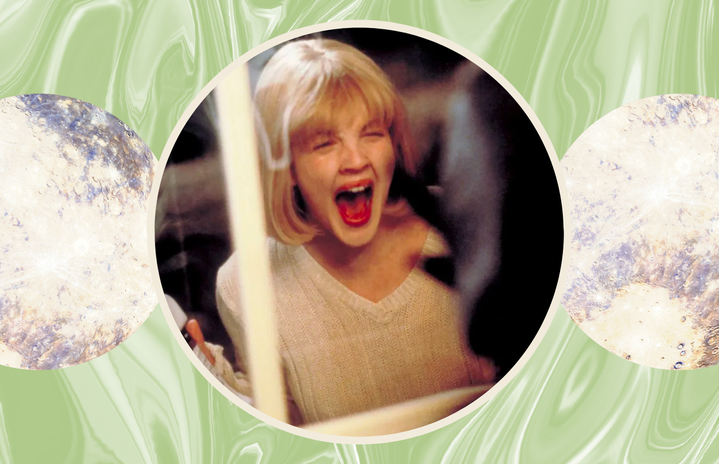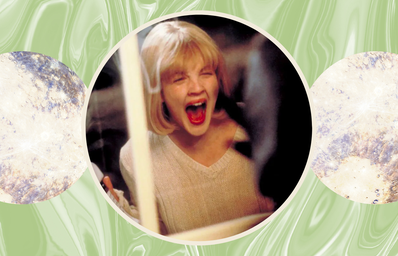While Hollywood’s horror genre is all about blood-curdling monsters and supernatural killers, real-life science shows that the content of our everyday products may be just as chilling. Let’s take a look at how recent scientific findings about environmental toxins, rising disease rates, and sneaky contaminants have led to our own Nightmare on *insert your current location* Street.
The Menstrual product menace
Imagine if The Exorcist’s Linda Blair didn’t just need a priest, but a thorough decontamination. Studies reveal that many menstrual products contain a spooky lineup of unlisted chemicals — think pesticides, dioxins, arsenic, lead, and even formaldehyde. Research cited in the previously linked article found that these hidden ingredients might expose users to toxins that disrupt hormones, alter immunity, and contribute to long-term reproductive health issues.
The science behind it is shocking enough to turn menstrual pads and tampons into everyday fright objects. In horror movies, monsters lurk in shadows; in reality, they’re hiding in our bathroom cabinets.
The Rise of “Forever Chemicals”
If Halloween had Mike Myers, our real-life horror has PFAs (pre- and poly-fluoroalkyl substances). These “forever chemicals,” used to make things like non-stick cookware and water-resistant clothing, have shown up in our food, water, and air. As scientists discover connections between PFAs and health issues ranging from cancer to kidney disease, the question is: can they ever be defeated?
Just like Mike Myers, PFAs linger no matter what humanity does. They’re in our bloodstream, our environment, and even our rainwater. You can’t outrun them. The result? An existential horror that Hitchcock himself couldn’t have scripted better.
The Silent Slasher of Microplastics
It turns out that Jaws isn’t the only thing in our waters to be afraid of. Enter microplastics — tiny particles of plastic found in nearly every body of water on Earth, from the Mariana Trench to your local lakes. Scientists recently found microplastics in the bloodstream of human bodies for the first time, and that’s exactly as horrifying as it sounds.
What do microplastics do once they’re in our bodies? The full effects are still unknown, but initial research suggests they could disrupt our immune systems and may contribute to other health issues. Microplastics are like an invisible villain, creeping through the most ordinary parts of our lives. We’re all starring in The Thing — except now, “the thing” is a minuscule speck of plastic in our morning cup of water.
Climate Change: The BIrds but hotter
In horror film The Birds, characters are terrorized by aggressive birds. But in real life, extreme weather events driven by climate change are just as unpredictable and relentless. Global warming has intensified the effects of hurricanes, floods, wildfires, and droughts, and scientists are discovering that the ramifications are even worse than anticipated. Climate change has reached not only the environment but also human mental health, public health, and economic stability. Instead of being tormented by murderous seagulls on the beach, we find ourselves running from hurricanes and wildfires that threaten our livelihoods.
Imagine a horror movie where nature itself becomes the antagonist, relentlessly pursuing humans with wave after wave of natural disasters. The truth is, that may be where our world is headed; we get pushed closer and closer to Dante’s Inferno everyday.
Lab-grown meat: The Blob of the Future
The Blob: a gelatinous alien life form that engulfs everything it touches. Scientists are bringing this classic horror film to life with the creation of lab-grown meat, or meat cultivated from animal cells in petri dishes. While this innovation could mean progress for animal welfare and environmental sustainability efforts, it also prompts a few Frankenstein-esque questions.
It’s a horror plot that writes itself: a mysterious, ever-growing blob of lab meat, taking over cities one steak at a time. While scientists assure us this won’t be happening, the development of food from cells in a lab will always stir some deliciously dreadful thoughts.
A new genre of horror
In the end, recent scientific findings may be outdoing horror movies by bringing existential dread closer than any jump scare ever could. With contaminants in menstrual products, the microplastic invasion, and climate crises hanging over our heads, real life has become a true thriller for anyone paying attention. The scariest part? There’s no “final girl” running to safety; we’re all in this together.
So, maybe your next Halloween costume should be a tampon, a PFA molecule, or even a melting ice cap. After all, they’re the real villains in our 21st-century horror story.


